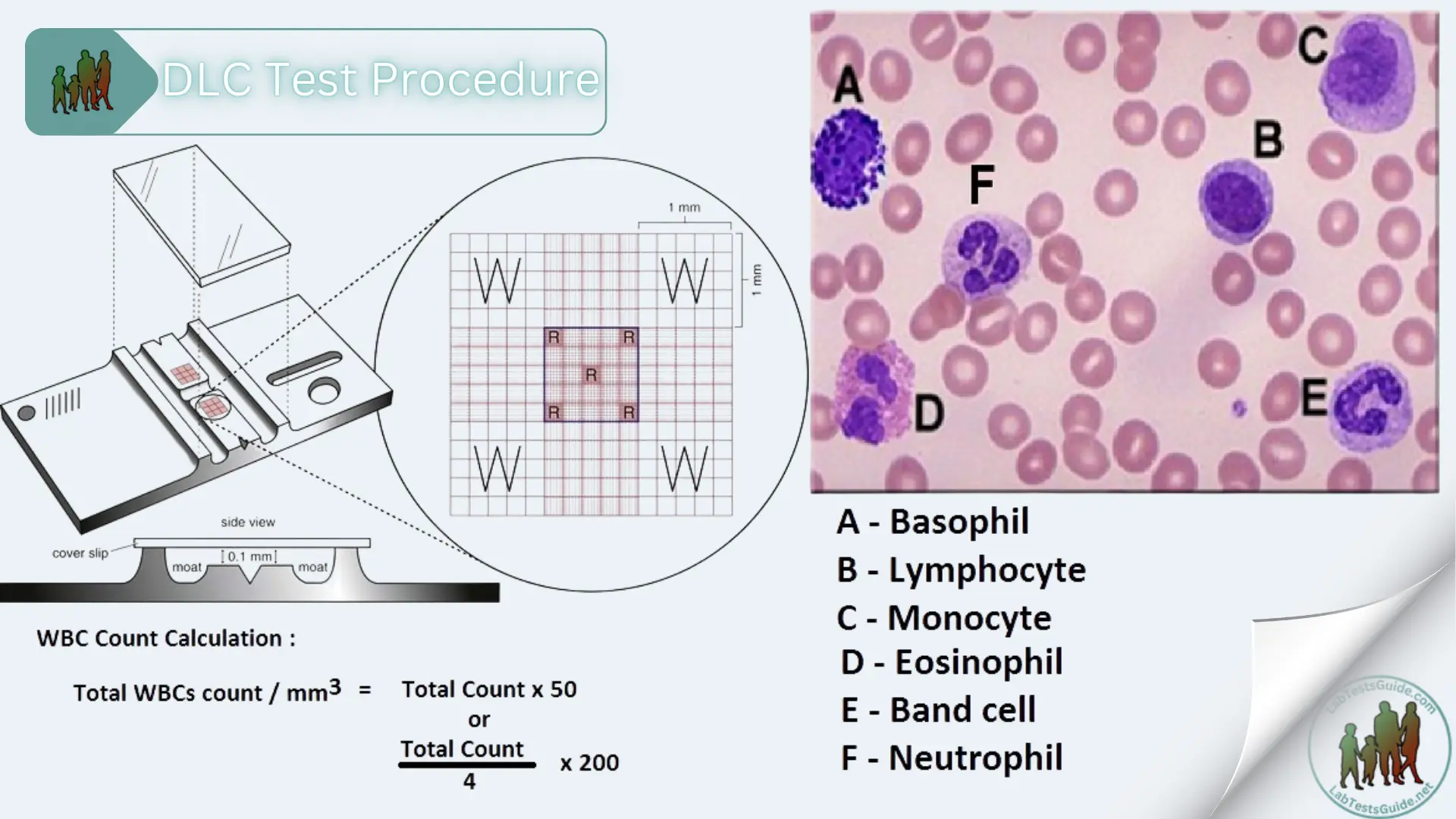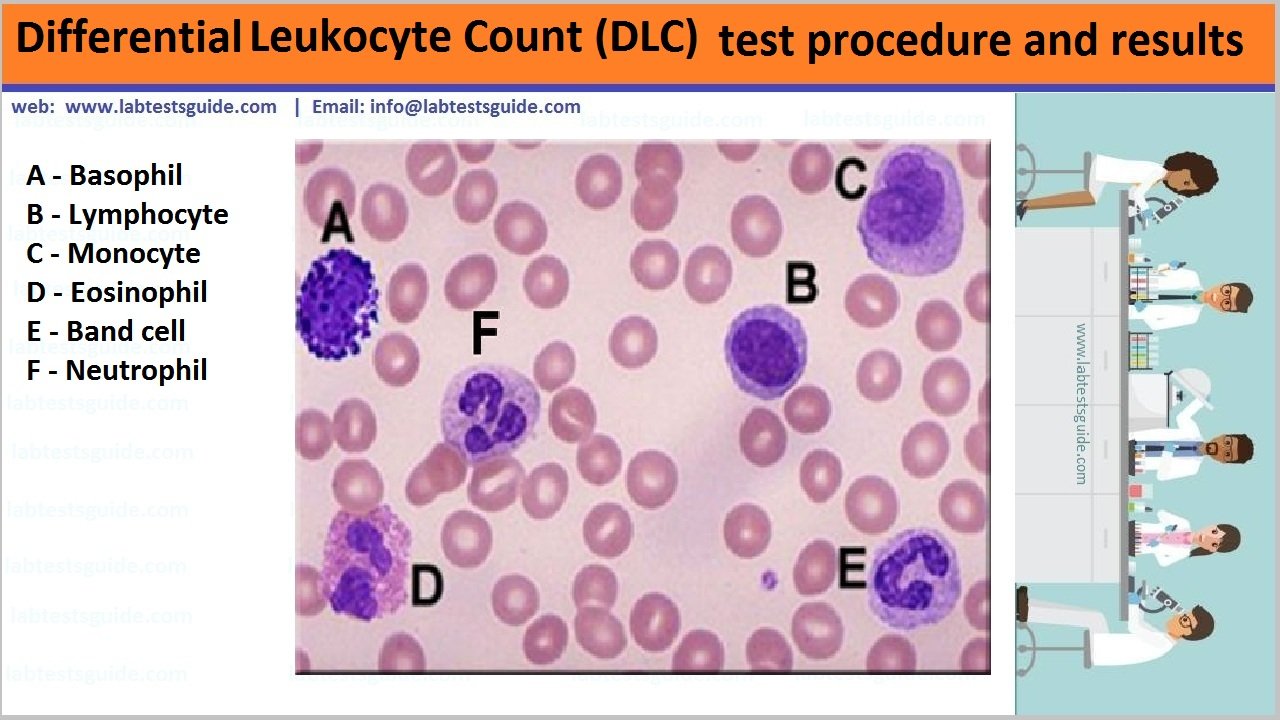A differential blood count gives the relative percentage of each type of white blood cell and also helps to reveal abnormal white blood cell populations (eg, blasts, immature granulocytes, and circulating lymphoma cells in the peripheral blood).

Also Known As: Leukocyte Differential Count, Peripheral Differential, WBC Count Differential, Diff ,Blood Differential, Differential Blood Count, DLC
Test Panel: Hemoglobin, Red Blood Cells (RBC), HCT, MCV, MCH, MCHC, Platelets Count, White Blood Cells (WBC), DLC, ESR
Types of Leukocytes:
have five types of white blood cells:
Test Procedure
Leukocytes are classified into various groups depending on their size, features of the nucleus and features of the cytoplasm. The WBCs exist in two forms viz. granulocytes and agranulocytes. Granulocytes are further classified as eosinophil, basophil, neutrophil, while agranulocytes shows lymphocytes and monocytes.
Sample Required:
- The best sample is blood in EDTA.
- Also, prepare fresh peripheral blood smear.
- This is inexpensive, easy to perform and rapidly done as a screening test.
Test Requirements:
- Well mixed whole or anticoagulent Blood
- Cotton
- Micropipette
- Glass Slides
- Distilles Water
- Stain (any one)
- Dicrorizer (Any one)
- Microscope
- Hand Counter
Preparing the Slide:
- Collect drops of blood on the end side of a glass slide.
- Spread the blood drop with another glass slide by placing it at an angle of 45 degree and move sidewise.
- Hold the spreader firmly and move it on the previous slide to the other end ina straight line with same force and pressure.
- Allow the glass slide to dry after formation of the smear.
- Fix the smear with air dry or any other fixative/
Staining the Slide:
There are 4 common stains used to dlc test
Use any one of stain to stain the slide.
Observation the slide and counting of cells
- Keep the prepared slide is under low power of microscope and choose a good quality slide.
- Then identify different types of WBC under medium power.
- Draw a table with 10 boxes both on horizontal and vertical axis on a observation notebook or use hand counter to count the cells.
- Fix the slide on the plateform and choose a area towards the corner.
- Count the different types of WBC found on the table in an abbreviated.
- Move downwards and in chain like manner till 100 cells are observed.
- After counting 100 cells prepare the report.

Referance Ranges:
| Test Name | Male | Female |
| Neutrophils (Poly) | 40 – 75 % | 30-75 g/dl |
| Lymphocytes | 20 – 50 % | 20 – 50 % |
| Monocytes | 2- -10 % | 2- -10 % |
| Eosinophils | 1- 6 % | 1- 6 % |
| Basophils | 0.3 – 1 % | 0.3 – 1 % |
Possible References Used







Please, send me the file.